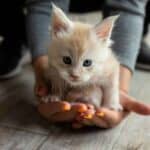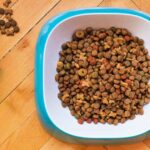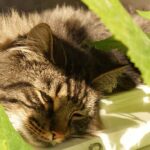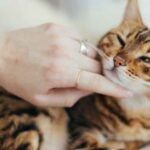Introduction
Maine Coons are a breed of domestic cats that have been around since the early 1800s. They are known for their large size and thick, luxurious coats. They are also characterized by their large, tufted ears, long tails, and wide, almond-shaped eyes. Maine Coons are affectionate, loyal, and intelligent cats, which makes them a popular choice for pet owners.
The origin of Maine Coons is a mystery that has been debated for centuries. While some believe that they are descended from the cats of Marie Antoinette, others believe that their ancestry is more closely related to raccoons. In this article, we will explore the various theories behind the origin of Maine Coons and the evidence that supports each theory.
Origin Theories
The Captain Coon Theory
The most widely accepted theory behind the origin of Maine Coons is the Captain Coon theory. This theory suggests that the Maine Coon breed originated in the early 1800s, when a ship captain from Maine named Coon brought a few cats with him on his trips. These cats were believed to have been brought from various locations around the world, including Europe and Asia. Over time, the cats bred with other cats in the area, which resulted in the Maine Coon breed.
The Marie Antoinette Theory
Another popular theory suggests that the Maine Coon breed can be traced back to Marie Antoinette’s cats. This theory suggests that the Queen’s cats were brought to the United States during the French Revolution. It is believed that these cats were eventually bred with other cats in the area, resulting in the Maine Coon breed.
The Raccoon Theory
The third theory suggests that Maine Coons are descended from the raccoon. This theory suggests that the Maine Coon breed is the result of a domestic cat being bred with a raccoon. It is believed that the raccoon’s genes provided the Maine Coon with its unique coat and long tail.
Evidence in Support of Origin Theories
Captain Coon Theory
There is some evidence in support of the Captain Coon theory. For one, early Maine Coons were known to have a number of traits that are still seen in today’s breed. These traits include a large, muscular body, a thick coat, and a long, tufted tail. It is also believed that the sailors on Coon’s ship were likely responsible for introducing these cats to the area.
Marie Antoinette Theory
The Marie Antoinette theory also has some evidence in its favor. For one, the Queen’s cats were known to have a number of traits that are still seen in today’s Maine Coon breed, including a thick coat, a long tail, and wide, almond-shaped eyes. Additionally, the escape of the Queen’s cats from France to the United States is well-documented, which further supports this theory.
Raccoon Theory
The Raccoon theory is also supported by evidence. For one, it is believed that the raccoon’s genes provided the Maine Coon breed with its unique coat and long tail. Additionally, domestic cats are known to be able to interbreed with wild cats, which could explain how a raccoon and a domestic cat could produce a new breed. Furthermore, Maine Coons are known to have some traits that are similar to raccoons, including their long tails and thick coats.
Conclusion
The origin of Maine Coons is still a mystery, but there are several theories that attempt to explain their origin. The most widely accepted theory is the Captain Coon theory, which suggests that the breed originated in the early 1800s when a ship captain from Maine named Coon brought a few cats with him on his trips. Additionally, the Marie Antoinette theory suggests that the Maine Coon breed can be traced back to the Queen’s cats, while the Raccoon theory suggests that the breed is descended from the raccoon. Each of these theories is supported by evidence, which makes it difficult to definitively determine the breed’s origin.
Despite the mystery surrounding the origin of Maine Coons, the breed has become increasingly popular over the years. They are known for their intelligence, loyalty, and affectionate nature, which makes them an ideal pet for many households. Additionally, their thick coats and large size make them a unique breed of cat, which further contributes to their popularity.Maine Coons are a popular choice for pet owners due to their intelligence, loyalty, and affectionate nature. They are also known for their thick coats and large size, which makes them a unique breed of cat. They are also relatively low-maintenance cats, as they require minimal grooming and are relatively healthy.
Given their popularity, it is not surprising that there are a number of organizations dedicated to the care and well-being of Maine Coons. The Maine Coon Cat Club is a non-profit organization that works to promote the health and welfare of the breed. They hold an annual show, provide educational materials about the breed, and have a rescue program for cats in need.
In addition to the Maine Coon Cat Club, there are a number of other organizations that work to rescue and protect Maine Coons. The Maine Coon Rescue Network is a non-profit organization that focuses on rescuing, rehabilitating, and rehoming Maine Coons. The organization also provides resources to owners of Maine Coons, including information about proper nutrition and health care.
While the origin of Maine Coons is still a mystery, the breed has become increasingly popular over the years. They are known for their intelligence, loyalty, and affectionate nature, which makes them an ideal pet for many households. Additionally, their thick coats and large size make them a unique breed of cat, which further contributes to their popularity.
With the increasing popularity of Maine Coons, there are a number of resources available to help owners care for their cats. There are a number of organizations dedicated to the care and well-being of Maine Coons, as well as books, websites, and blogs devoted to the breed. By taking the time to learn about the breed and its needs, owners can provide their cats with the best possible care and ensure that they live long, healthy lives.






